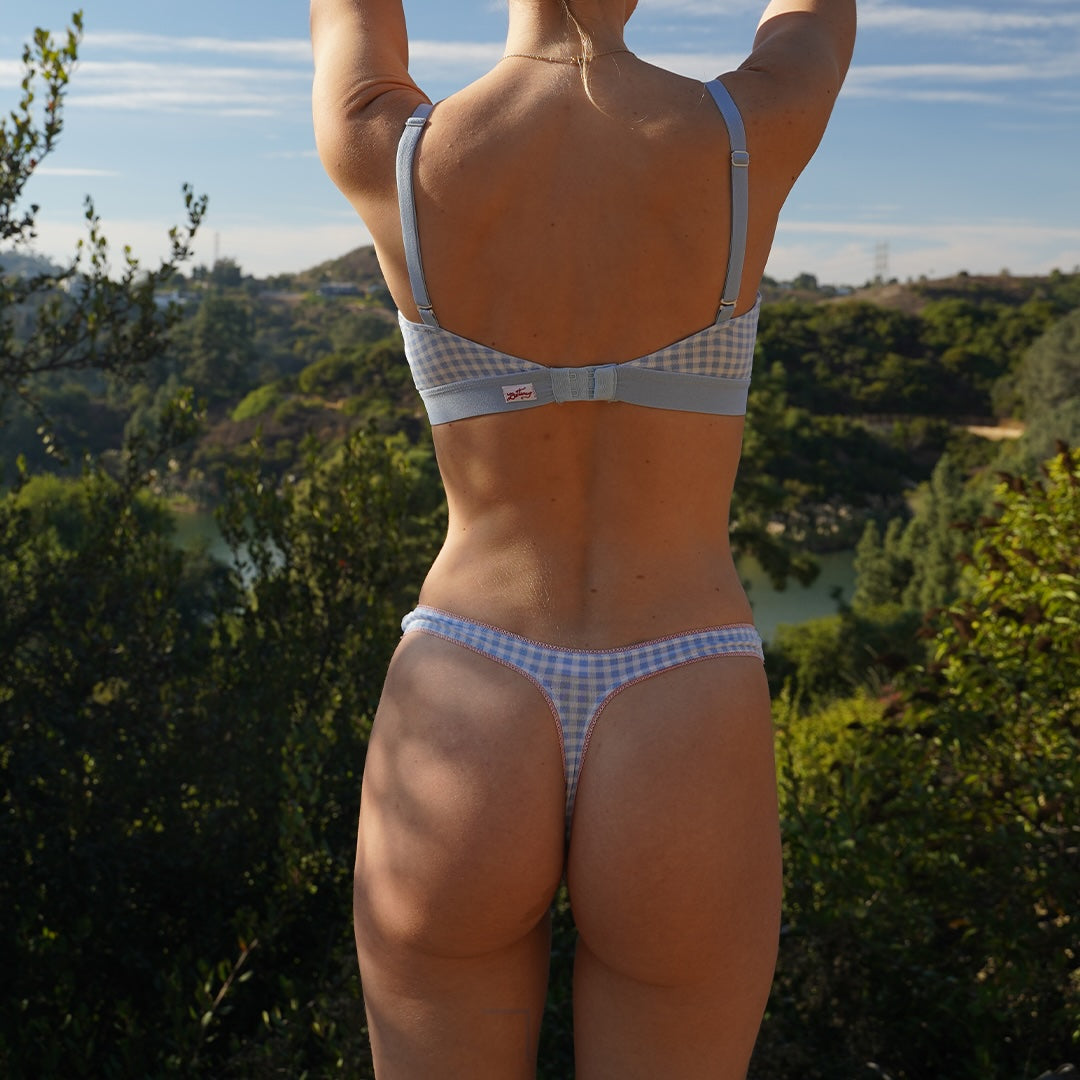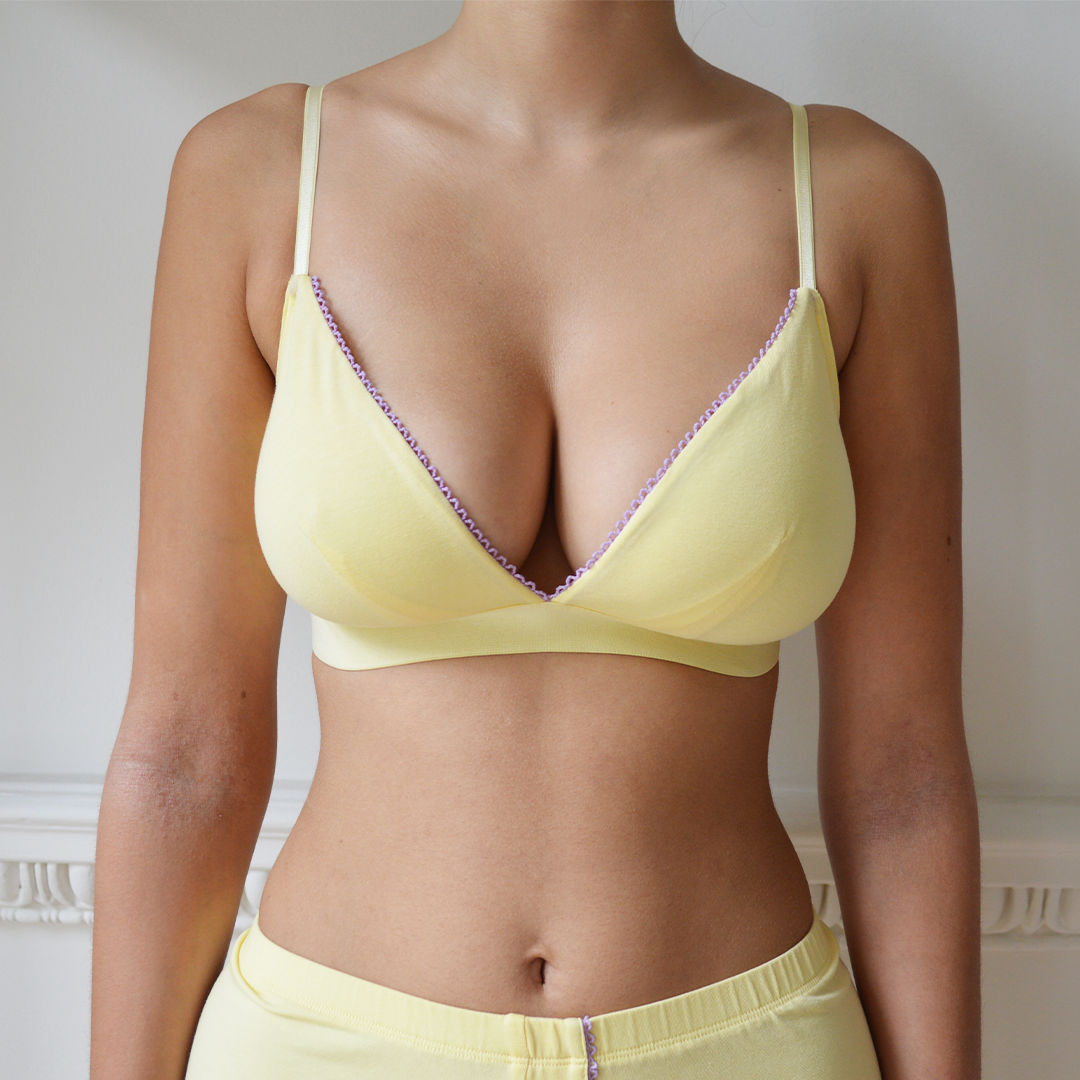Bras and underwear are one of the few clothing items that you can't really buy second-hand, so making our bras and undies as sustainable as possible has been important to us from the beginning. Because we're a small company with no outside funding, we can't do everything from day one (a lot of the things we'd like to do become cheaper with economies of scale). However, in the spirit of starting as you mean to go on, here is where we are right now:
Our bras are made with 95% organic cotton and 5% elastane. Organic cotton is different from regular cotton because it adheres to very strict social and environmental standards, laid out by the Global Organic Textile Standard (GOTS). You can read through them all here. The social regulations (like the right to collective bargaining, living wage payment, health and safety and so on) are particularly important to us because non-organic cotton is associated with some profoundly disturbing human rights abuses. You can read about that here if you'd like, but it is quite upsetting.
GOTS environmental regulations mean that the cotton we use causes a lot less water pollution and green house gas emission than regular cotton. Regular cotton farming involves the use of pesticides, fertilizers, insecticides, and herbicides. These chemicals run into local rivers and water sources, polluting community water and accumulating in local wildlife. Staying away from nitrous-emitting fertilizers also means that organic cotton has a 46% reduced global warming potential (GWP) compared to conventional cotton. It also allows the soil to lock away more carbon than conventionally farmed soil (thereby removing it from the atmosphere.) Here are some very positive reports on the potential for organic cotton, from the Soil Association and Textile Exchange.
Organic cotton isn't a perfect textile, though. Yes, it uses less water than conventional cotton—by some measures, up to 91% less water per kilo. Moreover, 95% of water used in organic cotton farming comes from rain or soil moisture. However, because of its lower yield (thanks to strict rules about pesticides and fertilizers,) some argue that it requires more water per hectare of cotton-growing land. By that same logic, organic cotton requires more land per kilo of cotton produced and so is perhaps not the most efficient use of farmland. Vogue did a rather thorough deep-dive into the organic cotton issue, which you can read here.
Elastane, which we use to provide stretch in our products, is a plastic. We originally tried to make our bras (our first product) with just 100% cotton, but it simply wasn't comfortable or supportive enough, and would stretch out of shape and sag after a few weeks' wear. We have shrunk down the amount that we need to use by 10% by using different knitting techniques. It's also a problem because adding elastane to our cotton means that our fabric is harder to recycle, because each component has to be recycled separately. We are very interested in sustainable alternatives to stretch materials, particularly through the use of recycled elastane. That won't be financially possible for us until we sell some more undies. We will keep you posted.
On the packaging side, we use only brown paper mailers and recycled cardboard boxes for larger orders. All of our shipping is carbon neutral.
As we get bigger and have more resources, we will be able to experiment with more cool stuff (plastic free stretch materials? Carbon-neutral production?)
Thank you for caring and being interested. We will keep you updated as we go. Also, please feel free to send us suggestions! There are so many creative and niche ways to minimize our impact, and we'd love to hear from you if you have ideas.













